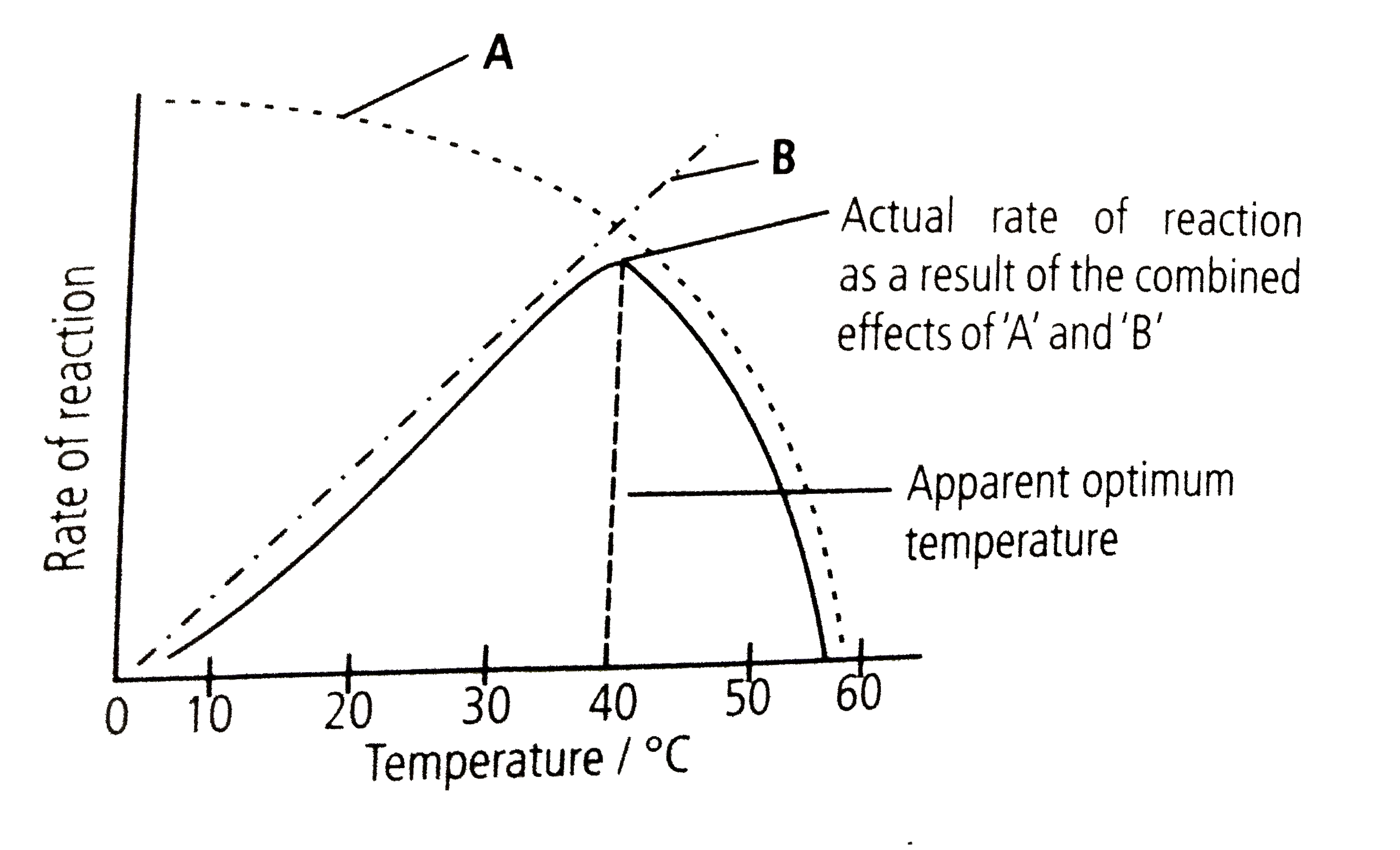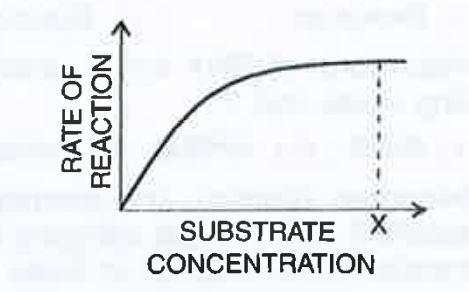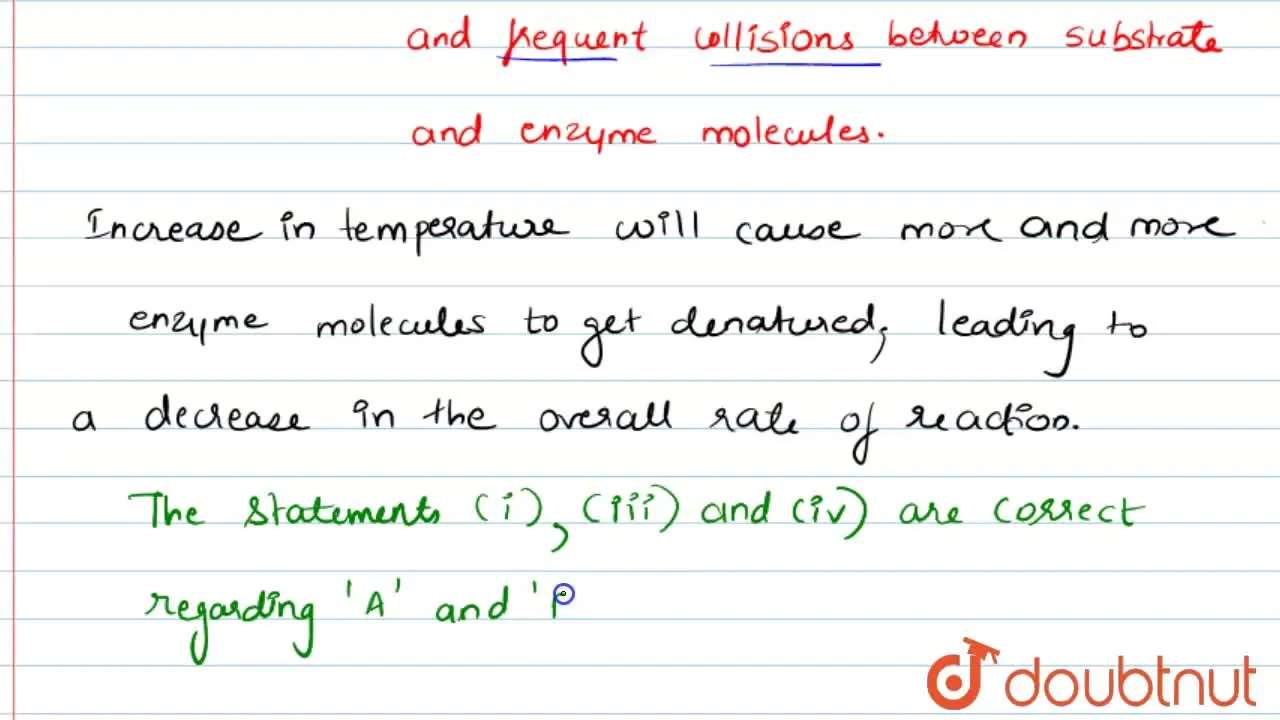Refer to the given graph showing relationship between temperature and enzyme action.
Select the correct statement regarding 'A' and 'B'.
(i) 'A' shows the rate at which reaction decreases due to denaturation of enzyme molecules.
(ii) 'B' shows rate at which reaction increases due to decreased kinetic energy of substrate.
(iii) As temperature rises, more and more enzyme molecules are denatured and 'A' appears to fall.
(iv) 'B' shows rate at which reaction increases due to increased kinetic energy of substrate and enzyme molecules.

(i),(iii) and (iv)
(iii) only
(iii) and (iv) only
(i) and (ii) only
The correct Answer is:A
In this study, enzyme and substrate are treated with increasing temperature before thet are mixed and the rate of reaction determined. Enzymes are mostly proteinaceous molecules. Proteins are denaturated by heat, and the rate of denaturation increases and becomes significant at higher temperatures. When enzyme is mixed with substrate, with increase in temperature the rate of reaction increases as there increased kinetic energy of both substrate and enzyme molecules leading to more rapid movement and their collisions. However, with increase in temperature denaturation of enzyme occurs which is in irreversible destruction, eventually destroying the active sites. As a result there is an apparent optimum temperature for the action of an enzyme due to dual effect firstly, on the reaction and secondly, the stability of the enzyme protein.
Related Playlists
- BOOK - NCERT FINGERTPS ENGLISHCHAPTER - BIOMOLECULESEXERCISE - Biomolecules137videos
BIOMOLECULES
- BOOK - NCERT FINGERTPS ENGLISHCHAPTER - BIOLOGICAL CLASSIFICATIONEXERCISE - Biological Classification132videos
BIOLOGICAL CLASSIFICATION
- BOOK - NCERT FINGERTPS ENGLISHCHAPTER - BODY FLUIDS AND CIRCULATIONEXERCISE - Body Fluids And Circulation151videos
BODY FLUIDS AND CIRCULATION
Similar Questions
Select the correct statement regarding enzyme analysis
View SolutionThe given graph is showing the relationship between the rate of enzyme reaction and concentration of substrate. At concentration of substrate greater than X, the
 View Solution
View SolutionWhich of the following graphs shows the relationship between the rate of an enzymatic activity and substrate concentration (S) ?
View SolutionOptimum temperature is the temperature at which an enzyme
View SolutionEnzymes enhance the rate of reaction by
View SolutionA cyanide molecule changes the rate of reaction due to
View SolutionThe rate of physisorption increases with
(a)Decrease in temperature
(b)Increase in temperature
(c)Both A and B
(d)None of theseView SolutionWhen the temperature is increased then enzyme substrate reaction
View SolutionHow do enzymes increase a reaction rate?
View SolutionAll enzymes get denatured at high temperature.
View Solution


